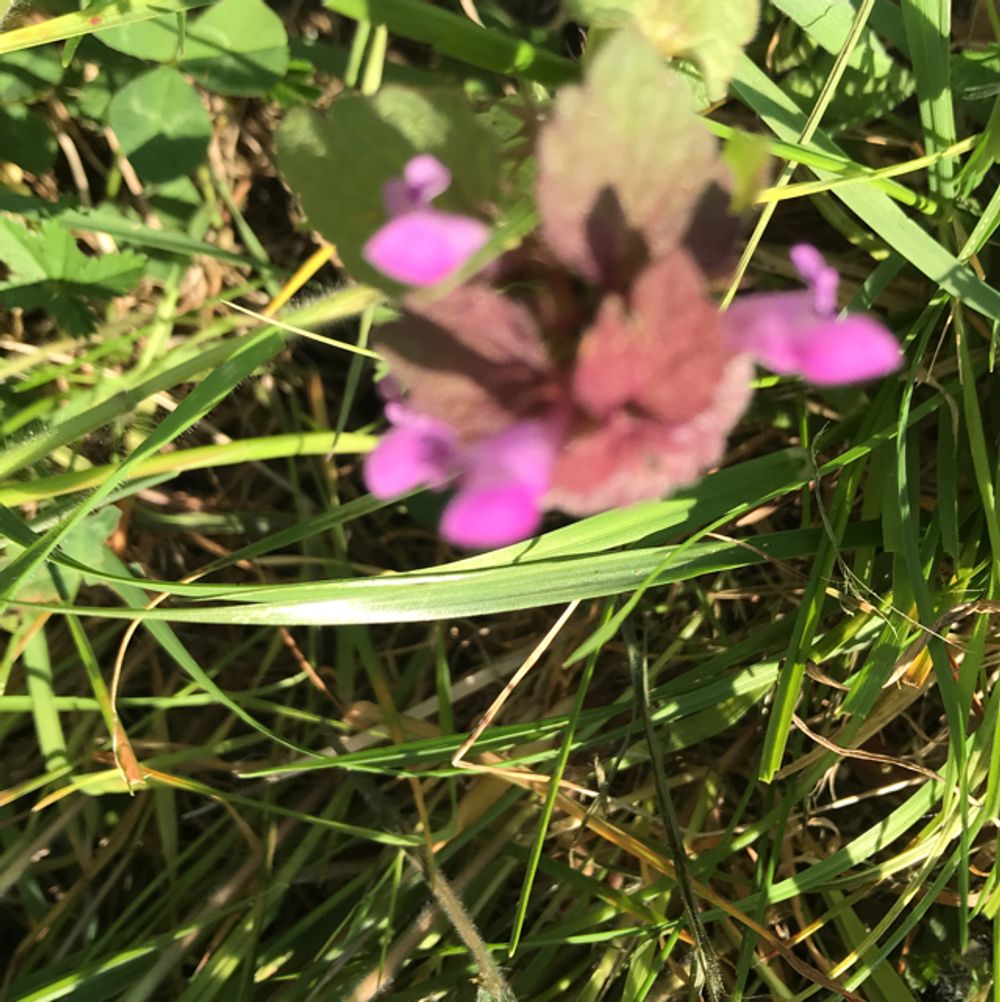Purple dead-nettle
(Lamium purpureum purpureum)

Description
Lamium purpureum purpureum, also known as purple dead-nettle, is a flowering plant species in the family Lamiaceae. This plant is native to Europe, Asia, and North Africa, but has also been introduced and naturalized in North America, Australia, and other regions. Lamium purpureum purpureum is a hardy annual plant that is often considered a weed, but is also cultivated for its ornamental value. In this article, we will explore the various aspects of Lamium purpureum purpureum, including its morphology, habitat, distribution, cultivation, uses, and potential benefits. Morphology Lamium purpureum purpureum is a small herbaceous plant that typically grows to a height of 10 to 30 cm (4 to 12 inches). The stem is square-shaped and often purplish in color, with leaves that are opposite, petiolate, and ovate to heart-shaped in shape. The leaves are also purplish in color and have a slightly hairy texture. The flowers of Lamium purpureum purpureum are tubular, two-lipped, and bloom in early spring to early summer. The flowers are arranged in whorls on the stem, and are typically a pinkish-purple color. The plant produces small, dry fruits that contain four seeds. Habitat and Distribution Lamium purpureum purpureum is a common plant that can be found in a wide range of habitats, including meadows, fields, lawns, waste areas, and disturbed areas such as roadsides and railways. This plant prefers moist soils and partial shade, but can also tolerate full sun and dry soils. Lamium purpureum purpureum is native to Europe, Asia, and North Africa, and has been introduced and naturalized in North America, Australia, and other regions. In North America, it can be found throughout much of the United States and Canada. Cultivation Lamium purpureum purpureum is a hardy and easy-to-grow plant that is often considered a weed. However, it is also cultivated for its ornamental value, as it can add color and texture to gardens and landscapes. This plant prefers moist soils and partial shade, but can also tolerate full sun and dry soils. To cultivate Lamium purpureum purpureum, sow the seeds directly into the soil in early spring or autumn. The plant can also be propagated through division in the spring or autumn. It is a self-seeding plant, so be sure to remove spent flowers to prevent excessive spreading. Uses Lamium purpureum purpureum has a number of uses and potential benefits. In traditional medicine, the plant has been used to treat a variety of ailments, including respiratory infections, gastrointestinal problems, and skin conditions. The plant is also edible and has a slightly sweet and tangy flavor. The leaves can be eaten raw or cooked, and are often used in salads or as a garnish. The flowers can also be used as a decorative and edible addition to salads and desserts. Potential Benefits Lamium purpureum purpureum has a number of potential benefits that have been studied in recent years. The plant contains several bioactive compounds, including flavonoids, phenolic acids, and terpenoids, which have antioxidant, anti-inflammatory, and antimicrobial properties. Studies have also shown that Lamium purpureum purpureum may have potential as a natural treatment for a variety of ailments, including respiratory infections, allergies, and skin conditions. For example, a study published in the Journal of Ethnopharmacology found that an extract of Lamium purpureum purpureum had significant antimicrobial activity against several common respiratory pathogens
Taxonomic tree:







